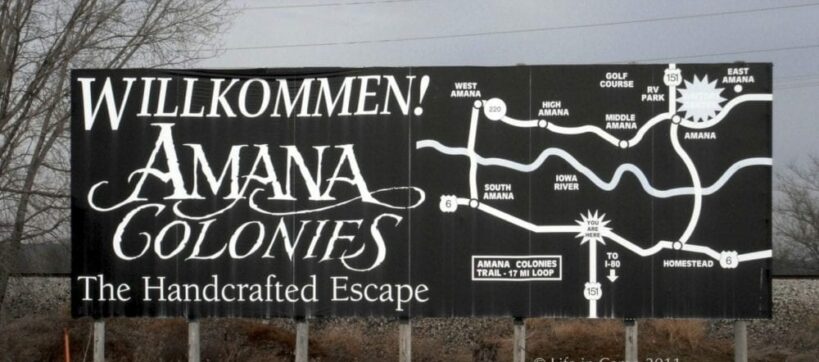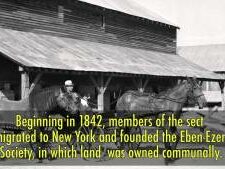Blog
The Amana Story 304 Years in the Making Part 1

When you walk down the street of any one of the seven Amana villages you can see the shape of the buildings, the line of the roofs and the cut of the stones that the past has hewn the present form of the Amanas. So that you can tour the colonies and appreciate all they have to offer, here is the Amana's story.

In Germany in the early 1700's a religious awakening was underway when two men, Eberhard L. Gruber, a Lutheran clergyman, and Johann F. Rock, a harness maker, became acquainted.
They held a strong, mutual belief that a prayerful relationship with the Lord would lead to a godly life. Advocating humility and piety expressed in simple worship, they believed that God may communicate to his followers through an inspired individual just as he did in the days of the biblical prophets. This individual, called a Werkzeug (instrument), is regarded as a tool of God's will through which God speaks directly to his people. This belief is still a foundation of the Amana Church.
Beginning in 1714 Gruber and Rock began writing about their faith and traveling throughout Germany and Switzerland forming small congregations of followers that came to be known as the community of True Inspiration.
The Inspirationists were persecuted because they advocated freedom of speech and worship and they refused to send their children to public schools where churchmen taught. To escape fines and imprisonment, the Inspirationists flocked to the state of Hessen, one of the most liberal states in Germany.
In 1842, Metz and three followers travelled to America and bought 5,000 acres of land near Buffalo, NY which they named Ebenezer.
Metz proposed that a permanent constitution be adopted establishing a communal system. The Inspirationists owned the shops, mills and farmland of Ebenezer in common and individual needs were provided for by the community. The communal way of life would continue in the Amana Colonies for 89 Years.
When more farmland was needed for the growing community, now numbering about 1,200 members, leaders looked to the west where attractively-priced farmland was available.
Four men were sent first to Kansas and then Iowa to look for land. In Iowa they found what they were seeking.
CLICK HERE to read the rest of the story.
(From the Willkommen, used with permission of Emilie Hoppe)

